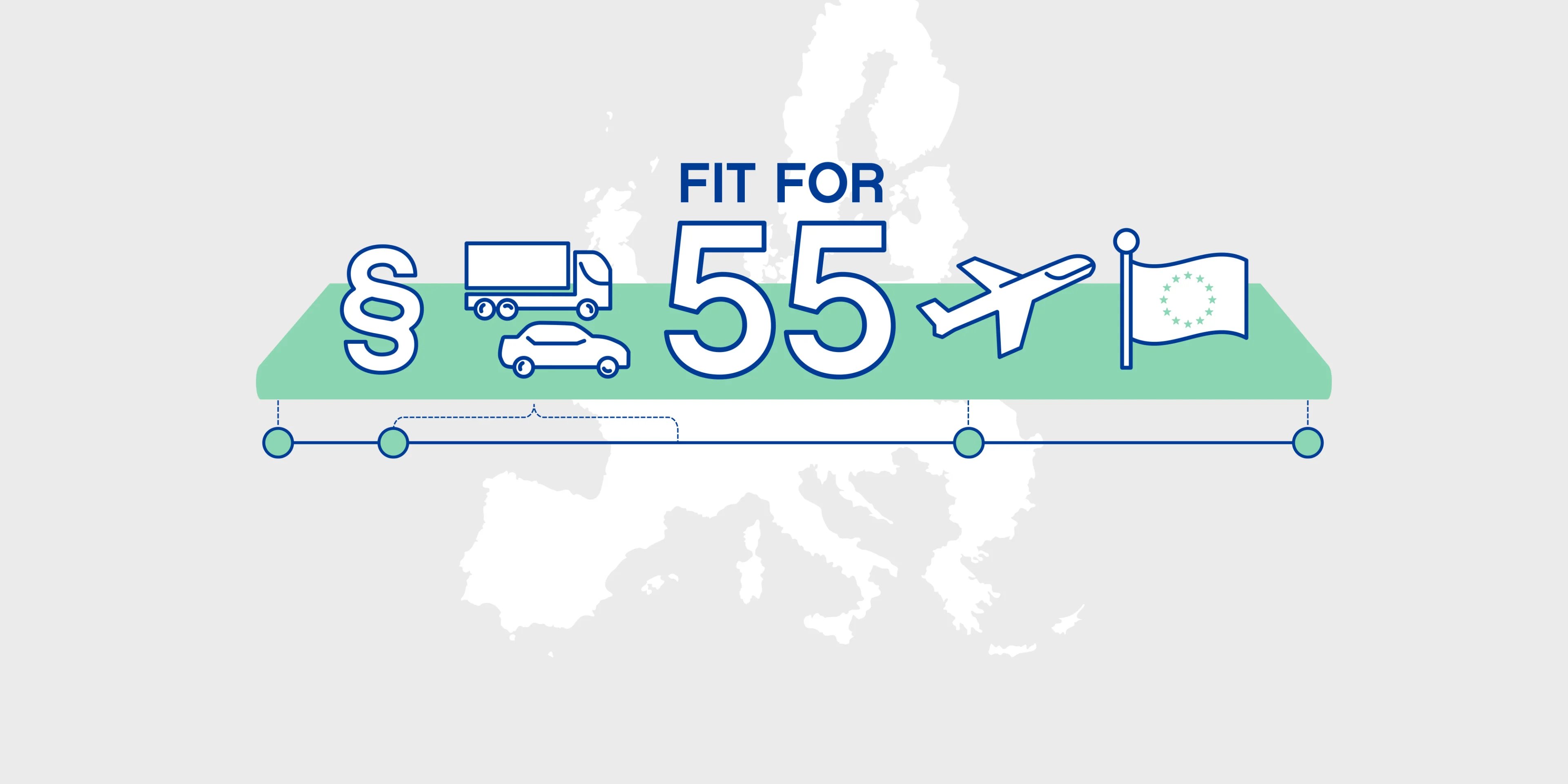
Transportation
3 minute read
EU’s Fit for 55: The Transportation Transformation You Need to Know About
The EU’s Fit for 55 package aims to bring Europe’s legislation in line with the 2030 target of reducing net greenhouse gas emissions by at least 55 percent. One key area in the decarbonization spotlight is transportation: including road, maritime and aviation. Find out here what you need to know about the proposed legislative changes.
The Fit for 55 legislative package is expected to take years before it is in full effect, but governments and businesses are already starting to act in anticipation of the changes.
“Fit for 55 is now being discussed and debated in the EU. With that, businesses are already doing the transition for a more sustainable way of doing business,” says Magdalena Streijffert, Head of Public Affairs in Sweden at Neste, a global leader in the field of renewable diesel for road vehicles and sustainable aviation fuel for airplanes.
From the perspective of transportation and aviation, the focus is on phasing out fossil fuels as soon as possible. While electrification is seen as a major part of the solution for road vehicles - particularly lighter vehicles such as passenger cars and vans - biofuels can play an important role in cutting emissions in our existing fleets. Many of these vehicles will be on our roads for some years to come and also need to be decarbonized.
“We all know that we need to phase out fossil fuels and cut the emissions here and now. Even though electrification has a lot of momentum, it will take time. Both to have the new electrified cars and vehicles on the roads - and the infrastructure for charging them,” says Streijffert.
“There will be cars and vehicles with a combustion engine for a long time to come and for that biofuels are the perfect solution. We can do a direct switch and fill the tank with renewables instead of fossil fuels. Biofuels are a long-term solution for the transportation sector as a whole, including aviation and maritime, which in fact are very hard to electrify.”
In aviation, which is a notoriously tricky sector to decarbonize, Sustainable Aviation Fuel (SAF) is being adopted by more and more airlines, in order to cut back on emissions.
Streijffert warns against parallel limits being placed on raw materials. This means we should not limit the types of materials we can make biofuels from as this would significantly hinder the ability to meet the growing demand. It would also increase competition for the biofuels that are available, and thereby increase costs. Overall, limiting raw materials would work against meeting climate targets quickly.
“When it comes to Fit for 55, the challenge that we see with the proposals is that if we are going to increase the ambition of cutting
emissions in road transportation, aviation and maritime, there needs to be enough raw materials for biofuels.”
“To narrow that down and to exclude several raw materials is not the way to go. The sustainable criteria need to continue to be strict, we can all agree on that, but narrowing down the raw material pool makes it very hard to produce enough biofuels. The alternative will then be fossil fuels.”
She concludes: “It is really important for Fit for 55 decision-makers to realize that if we want to be able to achieve the target of reducing emission by 55%, all solutions are needed.”
Credits:
Irja Howie, UK-based journalist and communications expert.
